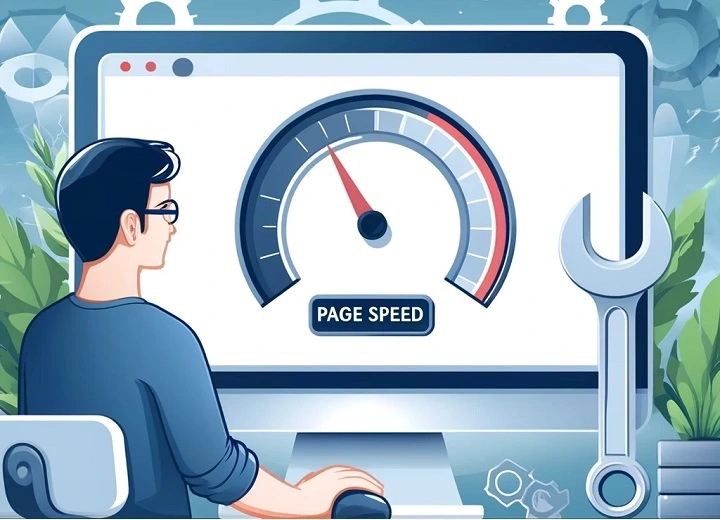In today’s fast-paced digital world, the speed at which your website loads can make or break your online presence. Page speed is not just a technical metric; it’s a critical component of user experience, search engine rankings, and overall website success. But what exactly is page speed, and how can you improve it? Let’s dive in.
What Is Page Speed?
Page speed refers to the time it takes for a webpage to load and display all its content fully. It encompasses several factors, including:
- Load Time: The time it takes for the entire page to be visible to the user.
- Time to First Byte (TTFB): The time it takes for a browser to receive the first byte of information from the server.
- First Contentful Paint (FCP): The time it takes for the first piece of content to appear on the screen.
Page speed is measured in seconds, and faster is always better. A fast-loading site enhances user experience, reduces bounce rates, and increases conversions.
Why Is Page Speed Important?
- User Experience: Slow-loading pages frustrate users, leading to higher bounce rates. According to Google, as page load time increases from 1 to 3 seconds, the probability of bounce increases by 32%.
- SEO: Search engines like Google consider page speed as a ranking factor. Faster sites tend to rank higher in search results, driving more organic traffic.
- Conversion Rates: Faster page loads improve conversion rates. For e-commerce sites, even a one-second delay can significantly reduce sales.
- Mobile Users: With the rise of mobile internet usage, page speed has become even more critical. Mobile users often have slower connections, making speed optimization crucial.
How to Improve Page Speed?
Improving page speed involves a mix of technical optimizations and best practices. Here are some effective strategies:
- Optimize Images:
- Compression: Use tools like TinyPNG or JPEG Optimizer to compress images without losing quality.
- Formats: Choose appropriate formats (JPEG for photos, PNG for graphics with transparency).
- Responsive Images: Serve images that are sized correctly for different devices.
- Minimize HTTP Requests:
- Reduce the number of elements on your page (scripts, images, CSS files).
- Use CSS sprites to combine multiple images into a single file.
- Implement lazy loading for images and videos.
- Leverage Browser Caching:
- Set expiration dates for certain types of content so browsers can cache them.
- Use tools like YSlow to see if your caching headers are set up correctly.
- Enable Compression:
- Use Gzip or Brotli to compress your files. This can reduce the size of your HTML, CSS, and JavaScript files.
- Minify CSS, JavaScript, and HTML:
- Remove unnecessary characters (spaces, commas) from your code.
- Use tools like UglifyJS for JavaScript, and CSSNano for CSS.
- Reduce Server Response Time:
- Optimize your database queries.
- Use a content delivery network (CDN) to serve content from servers closest to your users.
- Upgrade to a faster hosting provider if necessary.
- Optimize CSS Delivery:
- Use inline CSS for above-the-fold content.
- Load CSS asynchronously to prevent it from blocking the rendering of the page.
- Prioritize Above-the-Fold Content:
- Ensure that the content visible to users first (above the fold) loads quickly.
- Defer loading of JavaScript that isn’t needed immediately.
- Use a Fast Hosting Provider:
- Choose a reliable hosting provider known for speed.
- Consider using a managed hosting solution for better performance.
- Monitor and Analyze:
- Regularly use tools like Google PageSpeed Insights, GTmetrix, and Pingdom to monitor your page speed.
- Continuously test and refine your optimizations.
Conclusion
Page speed is a critical factor that affects every aspect of your website, from user satisfaction to search engine rankings. By understanding what page speed is and implementing the strategies outlined above, you can ensure your website delivers a fast, efficient, and enjoyable experience for all users. Regularly monitor and optimize your site to stay ahead of the competition and meet the ever-growing expectations of the digital audience.

